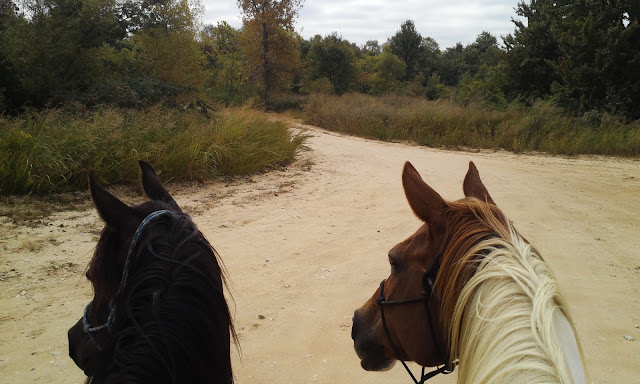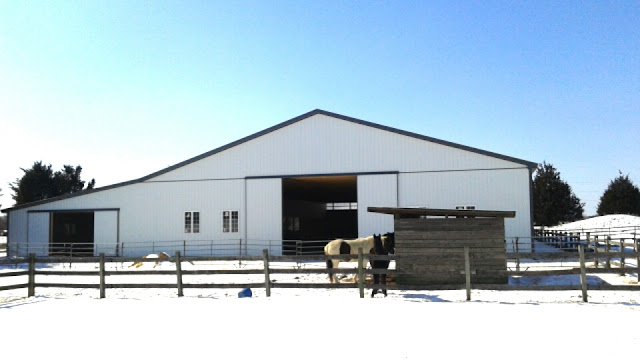The old mare watched the tractor work,
A thing of rubber and steel,
Ready to follow the slightest wish,
Of the man who held the wheel.
She said to herself as it passed by,
You gave me an awful jolt.
But there's still one thing you cannot do,
You cannot raise a colt.
Source unknown
If someone were to ask your definition of leadership, how would you answer? Perhaps the picture includes someone intelligent, confident, organized, high energy, and with a five year plan. Maybe it's someone with charisma, all the right words, and a three piece suit. I might answer that I see more leadership in a scruffy mane across the fence everyday, than I see anywhere else.
Horses are splendid examples of group dynamics, which is why they are used so widely these days in the therapeutic realm. The role of lead mare has been something I have cherished and respected since meeting the tall dark warm blood in our herd at least 7 years ago. But what I have noticed lately about lead mares has knocked me off my toes.
They all are.
Today if I look out over the pasture, I will see each of the five mares clear about their role, but confidently challenging it. Each one from the mature sensitive mare to the one who has given birth and mothered, the big one no one can ignore, and the young filly in a constant state of learning. But the mare that's caused me to notice all of this is my mare Lucy. Over the past 7 years I have watched a horse who I would diagnose as "passive" show up today as a mare that I am sure secretly runs the herd. She's not the first one at the hay bale, and she's not the one to show the new gelding where to stand. But she is the peacemaker of the herd. And the troublemaker. Everyone misses her when she's gone. The herd is provided with a steadiness because of who she is. She's taught people and horses in a way that makes them think they are doing it all themselves. I even watched her make baby faces at the new gelding the other day, for a reason unknown to me, this mare that regularly dishes out nasty faces to other horses on trail rides and in the ring.
I've watched her growth through the years not only in what we have done together but who she's been in the herd. I can't help but notice the mirror reflection on my own growth as well. Growth ranging from confidence and learning to self respect and self restraint. Mostly I hope the skill I can posess that I see in this lead mare is the graciousness and openness of heart that she has cultivated. The ability to be ok with everything as it is, and yet know that there is a way to make a powerful difference.
Every mare in that pasture is a lead mare. Some have more dominance traits, and some have more experience. But with a mare as with a leader, there is a driving purpose to be fulfilled that will never be satisfied. The purpose is the herd. It's safety, it's togetherness, it's serenity. A leader is someone who knows his purpose is the herd, and plays whatever part is necessary to make it work.
I used to think that some horses were leaders and the rest just followers in their own regard. Perhaps my definition of leadership has been very humanized. In a world of bullies and indentured servants, when someone tries to fulfill a calling, we label them "entrepreneurs". We call women who raise families "stay at home moms", as though location is needed for definition. We think leadership is what you do and accomplish, rather than what you provide and who you are. Leadership is something that can be present at any moment, simply by doing what you know there is to do, and by offering what you have to the herd, to the situation. It might mean backing away, or fighting, or a calm steady presence. As I see it from the mares, it's not what you do, it's for what you do. For the herd.











